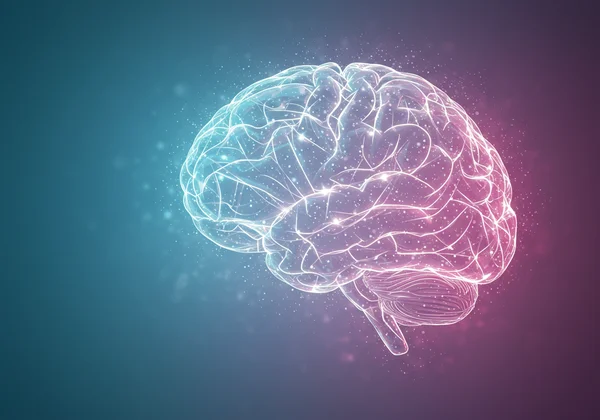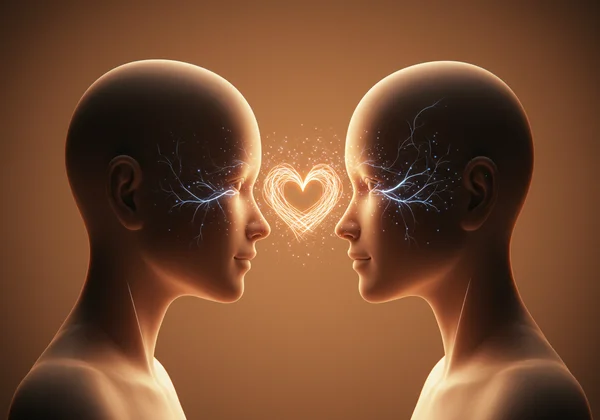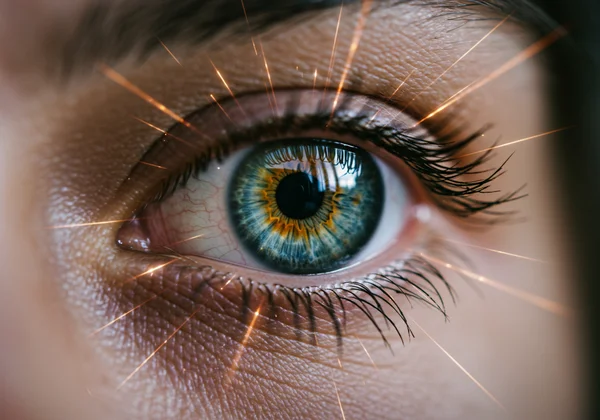Discover Your HSP Traits: An HSP Test Guide to Elaine Aron's DOES Model
Do you often feel things more deeply, notice subtle details others miss, or get easily overwhelmed by strong stimuli? Have you ever wondered, am I a highly sensitive person? If these questions resonate with you, you're not alone, and there's a scientific framework that can offer profound clarity. You might be a Highly Sensitive Person (HSP), a personality trait found in 15-20% of the population.
Ready to unravel why you feel things so deeply? This article introduces you to Dr. Elaine Aron's groundbreaking DOES model, a powerful scientific framework that helps demystify what it truly means to be highly sensitive. Understanding these core hsp traits is the first step toward self-acceptance and harnessing your unique strengths. To begin your journey, you can find out with a free test today.
What is the Highly Sensitive Person (HSP) Trait?
Before we dive deeper, let's clarify one crucial point: being a Highly Sensitive Person isn't a disorder or a flaw. It is an innate temperament trait, also known as Sensory Processing Sensitivity (SPS). It simply means your nervous system processes physical, emotional, and social stimuli more deeply than others. This isn't about being weak or overly emotional; it's about the intricate way your brain is wired.
Beyond "Just Being Sensitive": A Deeper Look
The term "sensitive" is often misunderstood and can carry negative connotations. However, in the context of HSPs, sensitivity is a neutral trait with both advantages and challenges. It’s not just about crying at sad movies; it’s about a profound level of processing that happens in the brain. This deeper processing affects everything from decision-making to navigating social situations and appreciating art.
The Scientific Foundation: Dr. Elaine Aron's Pioneering Research
The concept of the Highly Sensitive Person was pioneered by psychologist and researcher Dr. Elaine N. Aron in the 1990s. Her extensive research, detailed on her official website, provided a legitimate, scientific lens through which to view this trait. She developed the DOES model to summarize the four core aspects that define high sensitivity, giving millions a language to describe their inner experience accurately and confidently. Understanding this model is key to recognizing the trait in yourself or others.

Depth of Processing (D): Your Thoughtful Inner World
The "D" in DOES stands for Depth of Processing, which is the cornerstone of the HSP trait. If you are an HSP, you naturally process information more thoroughly. You unconsciously connect new information with past experiences, analyze potential outcomes, and reflect on topics at a much deeper level than non-HSPs. This is why you might take longer to make decisions—you are weighing every angle and possibility.
How Deeper Processing Manifests in Daily Life
This trait shows up in many ways. You might be the person who asks thought-provoking questions, enjoys deep conversations over small talk, and has a rich, complex inner life. You are likely conscientious and thorough in your work, always striving to do things well. On the flip side, this depth of processing can also lead to overthinking and feeling mentally exhausted after engaging in complex tasks.
The Advantages of Depth: Insight, Reflection, and Creativity
While it can be tiring, this depth is a true superpower. It fuels incredible insight, reflection, and creativity. HSPs are often seen as wise and intuitive because they connect the dots in ways others might miss. This ability to think deeply makes them excellent problem-solvers, innovative thinkers, and creative artists who bring a unique richness to the world.

Overarousability (O): Navigating a Stimulating World
The "O" stands for Overarousability or being easily overstimulated. Because your nervous system processes everything so deeply, it can get overwhelmed more quickly. A level of stimulation that is energizing for others—like a noisy party, a busy shopping mall, or a high-pressure deadline—can feel draining and chaotic for you. It's not that you can't handle these situations, but you reach your limit faster.
Recognizing Signs of Sensory Overload and Emotional Exhaustion
Signs of overarousal include feeling frazzled, anxious, or irritable after exposure to intense stimuli. You might feel a strong urge to withdraw to a quiet, dark room to decompress. This sensory overload and emotional exhaustion is your body’s signal that it needs a break to recover. Understanding this can help you manage your energy more effectively. The first step is often identification, which an official hsp test can help with.
Practical Strategies for Managing Overarousal
Learning to manage overstimulation is key to thriving as an HSP. Simple strategies include:
-
Scheduling downtime after stimulating events.
-
Creating a calming sanctuary at home.
-
Using noise-canceling headphones in loud environments.
-
Practicing mindfulness to stay grounded.

Emotional Responsiveness & Empathy (E): Feeling Deeply
The "E" represents both Emotional Responsiveness and Empathy. HSPs experience emotions—both positive and negative—more intensely. A beautiful piece of music might move you to tears of joy, while a critical comment might sting more deeply. This heightened emotionality is directly linked to a high degree of empathy. You don't just understand how others feel; you often feel it with them.
The Power of Empathy: Connecting with Others Authentically
Your profound empathy is a gift that allows you to form deep, authentic connections with others. Friends and family likely see you as a compassionate and trustworthy confidant. You are attuned to the emotional needs of those around you, making you a caring partner, parent, and friend. This quality is invaluable in any relationship.
Cultivating Self-Compassion Amidst Strong Emotions
The intensity of your emotions can sometimes feel overwhelming. It is vital to practice self-compassion and avoid self-criticism for feeling things so deeply. Acknowledge your feelings without judgment and remember that your emotional depth is part of what makes you who you are. Understanding this trait through a highly sensitive person test can be an act of self-care.

Sensitivity to Subtle Stimuli (S): Noticing Nuances
Finally, the "S" stands for Sensitivity to Subtle Stimuli. This means you are highly aware of subtleties in your environment that others might not notice. This could be a faint, pleasant aroma, a slight shift in someone's tone of voice, or minor changes in a room's decor. Your senses are finely tuned to pick up on the details.
The Gift of Observation: Appreciating Finer Details
This gift of observation allows you to appreciate beauty on a profound level. You might find immense joy in art, nature, and music. In social situations, your ability to read non-verbal cues makes you highly intuitive and perceptive. You often know what's going on beneath the surface.
How Subtle Sensitivity Impacts Daily Experiences
This sensitivity can also mean you are more affected by things like scratchy fabrics, flickering lights, or strong smells. You may find you are particular about your environment because creating a harmonious space is essential for your well-being. Recognizing this need isn't being "picky"—it's honoring your finely tuned nervous system.

Embrace Your Sensitivity: Your Journey of Self-Discovery Begins
Understanding Elaine Aron's DOES model provides a compassionate and empowering framework for recognizing yourself as a Highly Sensitive Person. It moves beyond simple labels and offers a scientific explanation for your experiences. Seeing your trait through the lens of Depth, Overarousal, Emotionality, and Sensitivity to Subtleties can transform your life.
This knowledge allows you to embrace your strengths, like creativity and empathy, while developing strategies to manage challenges like overstimulation. Your sensitivity is not something to be fixed; it's a core part of you to be understood and celebrated. Ready to explore your unique traits? Take the official hsp test and start your journey of self-discovery today.
Frequently Asked Questions About HSP Traits
What are the main characteristics of a highly sensitive person?
The main characteristics are captured by Dr. Elaine Aron's DOES model: Depth of processing (thinking deeply), Overarousability (getting easily overwhelmed by stimuli), Emotional responsiveness and empathy (feeling emotions intensely), and Sensitivity to subtle stimuli (noticing small details). A person generally needs to exhibit all four traits to be considered an HSP.
What could be mistaken for HSP, and how is it different?
HSP is often mistaken for introversion, social anxiety, or even ADHD. While about 70% of HSPs are introverts, 30% are extroverts. The key difference is the underlying mechanism: HSP is about deep processing and overstimulation, whereas anxiety is fear-based, and ADHD involves challenges with attention regulation. Understanding your unique profile through a dedicated hsp quiz can help clarify these distinctions.
How can I confirm if I am a Highly Sensitive Person?
While reading about the traits can provide a strong indication, the most reliable way to confirm if you are an HSP is to take a scientifically validated assessment. An online hsp test, based on Dr. Elaine Aron's research, can give you a clear understanding of where you fall on the sensitivity spectrum and is the perfect starting point for self-exploration. Why not confirm your trait here?
Is HSP the same as neurodivergent?
While both terms relate to brain differences, they aren't the same. "Neurodivergent" is a broad term that typically refers to conditions like autism, ADHD, and dyslexia, which are seen as variations from the neurotypical brain. High sensitivity, or Sensory Processing Sensitivity, is considered a normal, innate personality trait, not a disorder or a neurodivergent condition in the clinical sense.